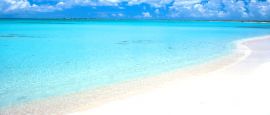Antigua and Barbuda Weather, climate and geography
Weather & climate
The islands enjoy a very pleasant balmy tropical climate which remains warm and relatively dry throughout the year, with relatively little variance. Temperatures range from lows of 22°C (72°F) to highs of 40°C (104°F) all year round, with October to January being the hottest time of year, staying in the region of 30°C (86°F) to 35°C (95°F). Cooling winds blow in from the south east so the heat rarely feels too unbearable. In general, humidity in Antigua and Barbuda is quite low, meaning you won’t be drenched in a sweaty fug during your trip.
The rainy season runs from around June to November, and during this time daily rain showers are common; there is also a good chance of tropical storms and hurricanes across the islands. Their location in the hurricane zone means the islands are vulnerable to powerful storms every two or three years, whilst hurricanes can hit every two to six years.
Geography
Antigua & Barbuda is made up of three islands; Antigua, Barbuda and Redonda. Low-lying and volcanic in origin, they are part of the Leeward Islands group in the northeast Caribbean.
Antigua's coastline curves into a multitude of coves and harbours (they were once volcanic craters) and there are more than 365 beaches of fine white sand, fringed with palms. The island's highest point, Mount Obama stands at 402m (1,319ft) high, and its capital is St John's.
Barbuda lies 61.5km (38.2 miles) north of Antigua and is an unspoiled natural haven for wild deer and exotic birds. Its 8km-long (5 miles) beach is reputed to be among the most beautiful in the world. The island's village capital, Codrington, was named after the Gloucestershire family that once leased Barbuda from the British Crown for the price of 'one fat pig per year if asked for'. There are excellent beaches and the ruins of some of the earliest plantations in the West Indies. The coastal waters are rich with all types of crustaceans and tropical fish.
Redonda, the smallest in the group, is little more than an uninhabited rocky islet. It lies 40km (25 miles) southwest of Antigua.
Do you have any Feedback about this page?
© 2025 Columbus Travel Media Ltd. All rights reserved. No part of this site may be reproduced without our written permission, click here for information on Columbus Content Solutions.




 You know where
You know where